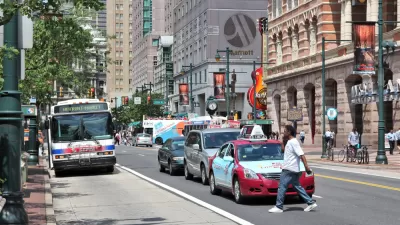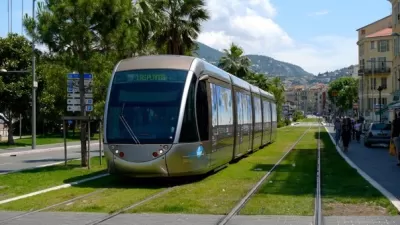Compact Development

Do Denser Neighborhoods Have Safer Streets?
Erick Guerra of the University of Pennsylvania writes about a recent article he co-authored in the Journal of Planning Education and Research

Compact Cities Are Environmentally and Economically More Sustainable
Sprawl leads to more emissions, but the economic costs are also high. Policies and strategies that ensure compact growth are essential.

Live Long and Prosper: Compact Development Increases Life Expectancy, Economic Development
The U.S. has lower average life expectancy than most peer countries. New research indicates that this results in part from sprawl. Life expectancy, economic mobility, mobility options, personal health and safety all improve in less sprawling areas.

Debating the Relationship Between Compact Development and Driving
Leading researchers debate whether more compact urban development reduces automobile travel in the Journal of the American Planning Association. The issues are complex and important.

An Accurate Answer to an Interesting Question: Are Compact Neighborhoods Really Most Affordable?
Contrary to recent claims, the evidence really does indicate that compact, multi-modal neighborhoods tend to be most affordable overall, considering both housing and transportation costs.
Editorial: Connecticut Must Do More to Support Compact Development
Though Connecticut is well served by commuter rail, a new report indicates that only half of the communities with Metro-North station have land use regulations in place to maximize development around them.

Three Everyday Ways to Inspire Urban Change
Chuck Wolfe suggests three, perhaps non-traditional ideas for how to inspire acceptance of change in our cities through accessible experiences.
Will Compact Development Define America's Next Era of Land Use?
'America 2013', a report released this week by the Urban Land Institute, presents the results of a nationwide survey on housing, transportation, and community preferences. Demographic trends indicate a continued demand for city living.
Successful Strategies for Building Up the Suburbs
A new report from the Urban Land Institute highlights successful strategies for adapting the infrastructure of America's suburbs to accommodate a densification of development.
For the Sake of Santa, Please Don't Build Any More Suburbs
Santa is sounding the alarm: "Christmas is in jeopardy.” What's making St. Nick a little less jolly this year? New analysis shows that suburban development patterns are driving up costs at the North Pole, say Paul Knight and Kevin Clark.
The U.S. Military: The Next Apostle of New Urbanism?
The Department of Defense has released new guidelines encouraging mixed-use, compact, walkable development throughout the nation's military bases, Sean Reilly reports.
The Housing Market Revolution
Haya El Nasser describes the housing market's fundamental structural changes as the housing industry rethinks what type of housing to build and where to build it.
An Argument for Housing Choice
Trying to thread the needle between those who celebrate the demise of the exurb and those who bemoan smart growth policies, Edward Glaeser argues that we can, and should, have it all when it comes to housing choice in America.
An Inaccurate Attack On Smart Growth
Note: This column was originally titled, "A Stupid Attack on Smart Growth," intended as a pun on 'smart' and 'stupid.' However, that sounds harsh so I retitled it. - T.L. The National Association of Home Builders (NAHB) has a well-financed campaign to discourage communities from considering smart growth as a possible way to conserve energy and reduce pollution emissions. They contend that compact development has little effect on travel activity and so provides minimal benefits. The NAHB states that, “The existing body of research demonstrates no clear link between residential land use and GHG emissions.” But their research actually found the opposite: it indicates that smart growth policies can have significant impacts on travel activity and emissions.
Redefining "Smart Growth" for the 21st Century
Kaid Benfield of the NRDC thinks it is time to add more specifics to the definition of smart growth. He prescribes a set of six new focus areas, including equity and health, that he argues should be emphasized in the 21st-century smart growth agenda.
Smart Growth = Clean Air
Kaid Benfield presents the evidence that compact development can bring about a decrease in noxious emissions.
Urban Design for Planners 1: Software Tools
This six-course series explores essential urban design concepts using open source software and equips planners with the tools they need to participate fully in the urban design process.
Planning for Universal Design
Learn the tools for implementing Universal Design in planning regulations.
planning NEXT
Appalachian Highlands Housing Partners
Mpact (founded as Rail~Volution)
City of Camden Redevelopment Agency
City of Astoria
City of Portland
City of Laramie


































